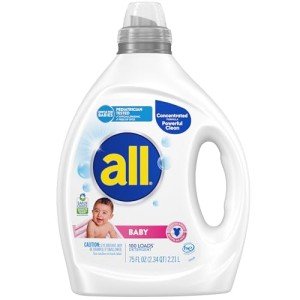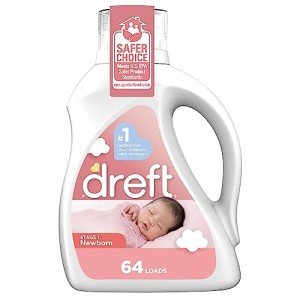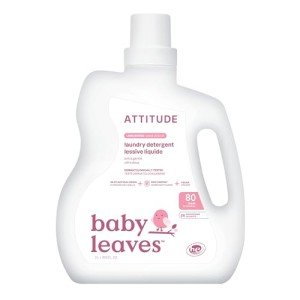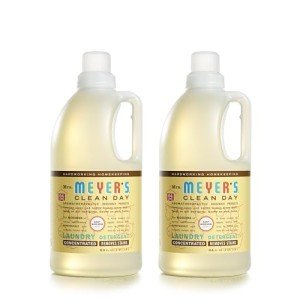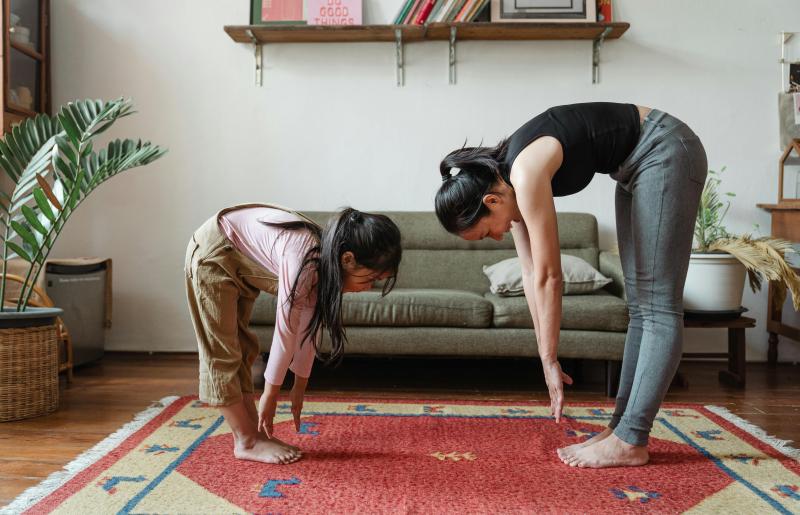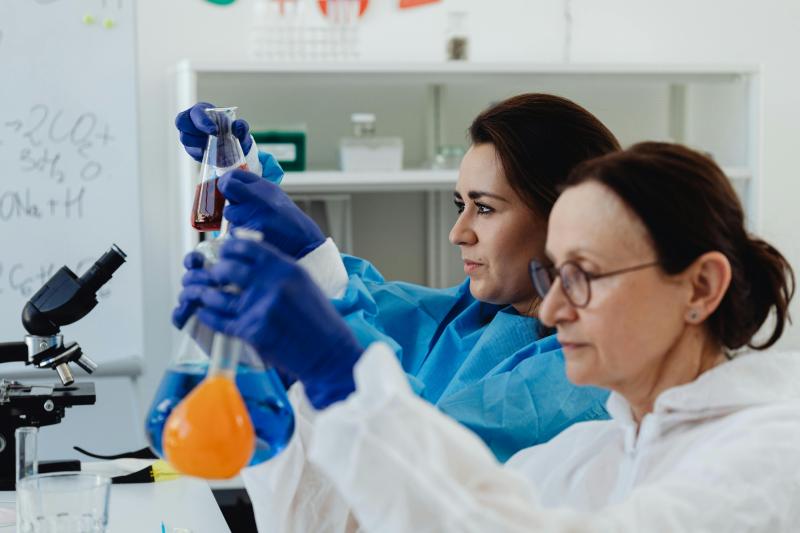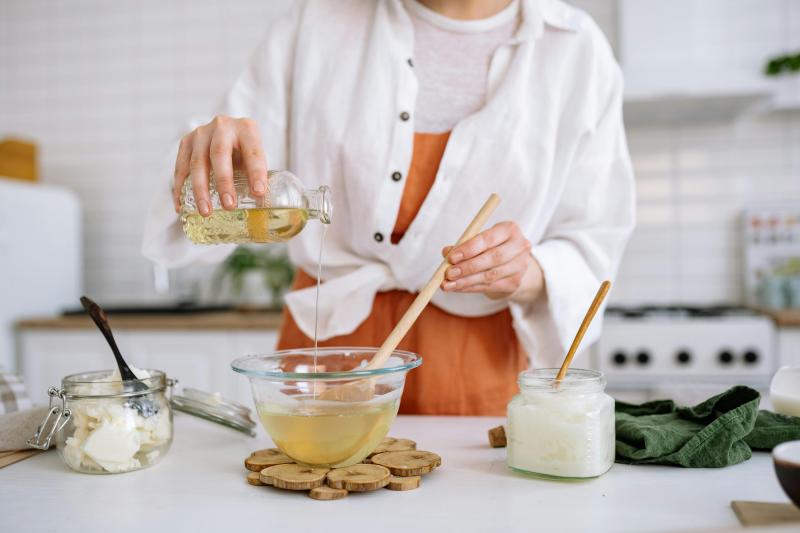|
BY JONATHAN ESSARY · JUNE 23, 2025 |
|
READ EST: 5 MINS |
DEFINING “BABY-READY”
The moment your baby takes their first crawl or tentative step, your home transforms from a relatively controlled environment into an adventure playground where every corner holds potential discoveries [1]. This milestone brings immense joy, but also requires a fundamental shift in how you approach household cleaning and product storage [2]. What once seemed safely tucked away under the sink suddenly becomes an irresistible target for tiny, curious hands that explore the world through touch and taste [3].
Baby-proofing your cleaning routine involves more than simply moving bottles to higher shelves—it requires a thoughtful transition to products and practices that protect your little explorer while maintaining the cleanliness standards your family deserves [4]. This comprehensive approach ensures that even if your determined toddler can access cleaning supplies despite your best efforts, the consequences remain minimal rather than catastrophic [2].
UNDERSTANDING YOUR CHILD'S DEVELOPMENTAL TIMELINE
THE CRITICAL MOBILITY PHASES
Babies typically begin showing signs of mobility between 4 and 6 months, starting with rolling and progressing through sitting, crawling, and eventually walking [5]. Each developmental stage presents unique challenges for maintaining a safe cleaning environment [1]. The transition from stationary infant to mobile explorer happens more quickly than most parents anticipate, making proactive planning essential rather than reactive scrambling [6].
During the crawling phase, babies spend significant time at floor level where cleaning product residues, dust particles, and dropped items concentrate [3]. Their natural hand-to-mouth behavior means that anything their fingers encounter may end up in their mouths within seconds [3]. This reality makes the choice of cleaning products and storage methods critical for preventing accidental exposure to harmful substances [4].
RECOGNIZING EXPLORATION PATTERNS
Toddlers demonstrate remarkable persistence and creativity when investigating their environment [2]. They observe adults using colorful bottles and interesting spray mechanisms, creating natural curiosity about these seemingly magical tools [2]. Pine-scented floor cleaner can look remarkably similar to apple juice to a curious toddler, while clear disinfectants may appear as harmless as water [2].
Understanding these developmental patterns helps parents anticipate potential safety challenges rather than discovering them through frightening near-misses [6]. Children's climbing abilities often exceed parental expectations, with determined toddlers treating high shelves as challenges rather than barriers [2].
STRATEGIC STORAGE SOLUTIONS FOR CLEANING SUPPLIES
BEYOND "HIGH AND HIDDEN"
Traditional advice suggests simply placing cleaning products out of reach, but modern baby-proofing requires more sophisticated approaches [2]. Effective storage considers both immediate accessibility for adults and long-term security against increasingly capable young explorers [7]. Dedicated locked cabinets in utility areas provide the most secure option for potentially harmful products while maintaining convenient access for busy parents [7].
The most effective storage systems combine multiple security layers, including height, locks, and visual barriers [8]. Products stored in locked cabinets should remain in original containers with intact labels to ensure proper identification during emergencies [6]. Child-resistant packaging provides an additional safety barrier, though these mechanisms should never be considered foolproof [6].
CREATING SAFE ZONES FOR DAILY CLEANING
|
Storage Location |
Recommended Products |
Security Level |
Access Convenience |
|
Locked high cabinet |
Concentrated cleaners, disinfectants |
Maximum |
Low |
|
Under-sink with locks |
Daily-use mild products |
High |
Medium |
|
Open low storage |
Water-only cleaning tools |
Minimal |
Maximum |
|
Garage/utility room |
Seasonal/specialty cleaners |
Maximum |
Low |
Designating specific areas for different types of cleaning supplies helps maintain organization while ensuring appropriate security levels for each product category [7]. Products used frequently benefit from secure but accessible storage, while specialty items can be stored in more distant but highly secure locations [7].
TRANSITIONING TO TODDLER-SAFE CLEANING PRODUCTS
PRIORITIZING TRUE NON-TOXIC FORMULATIONS
The transition to baby-safe cleaning requires moving beyond products that simply claim to be "natural" toward those with verified safety profiles [4]. Products specifically formulated for households with young children undergo additional testing to ensure minimal risk even if accidentally ingested in small quantities [9]. These formulations typically exclude harsh chemicals like ammonia, chlorine bleach, and synthetic fragrances that pose the greatest risks to curious children [10].
Concentrated plant-based cleaners offer particular advantages for families with mobile children since they can be diluted to appropriate strength levels for different cleaning tasks [11]. Branch Basics concentrate, for example, can be mixed at various ratios to create everything from gentle surface cleaners to more powerful degreasers using the same base product [11]. This approach reduces the total number of different products stored in the home while ensuring consistent safety standards [12].
UNDERSTANDING CHILD-SPECIFIC SAFETY FEATURES
Modern baby-safe cleaning products incorporate design features that recognize the realities of life with curious toddlers [9]. Child-resistant packaging provides additional security, though parents should never rely solely on these mechanisms [6]. Products that break down quickly into harmless components offer protection even if small amounts are accidentally consumed [13].
Fragrance-free formulations eliminate synthetic scents that can trigger respiratory sensitivity in young children while reducing the appealing aroma that might attract curious explorers [14]. Products certified by organizations like EWG Verified or EPA Safer Choice have undergone rigorous evaluation to ensure they meet strict safety standards for households with children [10].
ROOM-BY-ROOM TRANSITION STRATEGIES
KITCHEN CLEANING ADAPTATIONS
The kitchen presents unique challenges since it must maintain food safety standards while remaining safe for children who spend increasing amounts of time in this central family space [12]. High chairs, floor areas, and low cabinets all require frequent cleaning with products that leave no harmful residues [12]. Transitioning to food-safe cleaners eliminates concerns about surface contact with items that children handle or put in their mouths [13].
Steam cleaning offers an excellent chemical-free option for kitchen floors where dropped food and crawling babies intersect daily [13]. For surface cleaning, simple vinegar and water solutions provide effective cleaning power without introducing synthetic chemicals into food preparation areas [15]. Dedicated baby-safe dish soap ensures that bottles, sippy cups, and feeding utensils receive thorough cleaning without leaving potentially harmful residues [12].
BATHROOM SAFETY TRANSFORMATIONS
Bathroom cleaning requires balancing thorough sanitization needs with the safety concerns of a space where children bathe and play in water [16]. Traditional bathroom cleaners often contain some of the harshest chemicals found in household products, making this area a priority for non-toxic transitions [10]. Mold and mildew prevention becomes particularly important since these problems require stronger intervention if allowed to develop [15].
Hydrogen peroxide-based cleaners provide effective disinfection for toilet areas, tubs, and surfaces without the respiratory irritation associated with chlorine bleach [13]. Baking soda paste offers gentle abrasive action for removing soap scum and mineral deposits without scratching surfaces or creating harmful fumes [17]. For daily maintenance, microfiber cloths used with water alone can handle most bathroom cleaning tasks without introducing any chemicals into the environment [18].
LIVING AREA MAINTENANCE
Living spaces where mobile children spend the majority of their active time require cleaning approaches that address constant contact with surfaces, toys, and furniture [19]. Upholstered furniture, carpets, and play areas all need regular attention using methods that eliminate germs and allergens without leaving chemical residues [3]. Steam cleaning provides the most comprehensive chemical-free approach for carpets and upholstery where children play and rest [13].
For hard surfaces, plant-based all-purpose cleaners designed specifically for baby safety offer effective cleaning without compromising air quality [9]. These spaces benefit from frequent vacuuming with HEPA filtration to remove dust particles that can contain flame retardants and other harmful chemicals that migrate from electronics and furniture [3].
INVOLVING CHILDREN IN SAFE CLEANING PRACTICES
AGE-APPROPRIATE PARTICIPATION
Teaching children to participate in cleaning activities provides valuable life skills while ensuring they understand appropriate boundaries around cleaning supplies [18]. Toddlers can safely use water-dampened microfiber cloths to wipe baseboards, window sills, and low surfaces under direct supervision [18]. This involvement helps children feel included while learning that cleaning tools require adult guidance [20].
Providing children with their own designated cleaning supplies—such as small spray bottles filled only with water—satisfies their desire to mimic adult activities while maintaining safety [18]. Water-only cleaning tools like e-cloths allow children to contribute meaningfully to household maintenance without exposure to any chemicals [18]. These activities teach responsibility while building positive associations with maintaining a clean environment [21].
CREATING CLEAR BOUNDARIES
Establishing clear rules about which cleaning supplies children can and cannot touch helps prevent confusion and accidental exposure [6]. Visual cues like different colored storage containers can help children understand which items are safe for their use versus those requiring adult handling [2]. Consistent messaging about cleaning product safety reinforces these boundaries without creating unnecessary fear about normal household maintenance [21].
Regular conversations about safety help children understand why certain products require special handling while encouraging them to alert adults if they encounter unfamiliar substances [6]. This approach builds safety awareness that serves children well throughout their development while maintaining their natural curiosity about how things work [18].
EMERGENCY PREPAREDNESS AND RESPONSE
ESSENTIAL SAFETY INFORMATION
Every household with mobile children should maintain current contact information for poison control centers and pediatric emergency services [6]. The national Poison Control Center (1-800-222-1222) provides 24-hour guidance for chemical exposure incidents and should be programmed into all family phones [6]. Having product labels and ingredient lists readily available helps emergency responders provide appropriate guidance quickly [6].
Understanding basic first aid responses for different types of chemical exposure can make crucial differences in emergency situations [6]. For eye contact, immediate rinsing with plenty of water for 15 minutes provides essential initial treatment [6]. Skin contact requires removing contaminated clothing and thorough rinsing with water [6]. If ingestion occurs, providing water or milk while immediately contacting poison control offers the safest initial response [6].
PREVENTION THROUGH PREPARATION
The most effective emergency response is prevention through proper storage, appropriate product selection, and consistent safety practices [22]. Regular safety checks ensure that locks remain functional, high storage stays secure, and children haven't discovered new ways to access restricted areas [2]. Keeping emergency contact information easily accessible while maintaining calm, prepared responses to safety incidents helps manage crises effectively [6].
BUILDING SUSTAINABLE SAFETY HABITS
ESTABLISHING LONG-TERM ROUTINES
Successful baby-proofing requires developing habits that accommodate your family's evolving needs as children grow and develop new capabilities [21]. What works for a crawling infant may prove inadequate for a climbing toddler or curious preschooler [5]. Regular reassessment of storage methods, product choices, and safety measures ensures that protection keeps pace with developmental changes [1].
Creating manageable cleaning schedules that incorporate safety considerations helps maintain both cleanliness and protection without overwhelming busy parents [20]. Daily maintenance using safe products and methods proves more effective than sporadic intensive cleaning with harsh chemicals [23]. These sustainable approaches provide long-term solutions rather than temporary fixes that require constant adjustment [21].
ADAPTING TO GROWING INDEPENDENCE
As children mature, safety strategies can evolve to include education about appropriate product use rather than complete restriction [18]. Teaching older children to recognize warning labels, understand basic safety principles, and use simple cleaning tools safely prepares them for lifelong responsibility [18]. This gradual transition from protection to education helps children develop good judgment about household chemicals while maintaining necessary safety boundaries [21].
CREATING YOUR FAMILY'S SAFE CLEANING FOUNDATION
Baby-proofing your cleaning routine involves more than simply moving products to higher shelves, it requires a comprehensive approach that considers your child's development, your family's cleaning needs, and the long-term goal of maintaining a healthy home environment [22]. By transitioning to genuinely non-toxic products, implementing strategic storage solutions, and establishing sustainable safety habits, you create a foundation that protects your curious explorer while maintaining the cleanliness standards your family deserves [4].
Your investment in creating these safer systems pays dividends in peace of mind as your child explores their world with natural curiosity [1]. Every precaution you take, every safe product you choose, and every boundary you establish contribute to an environment where learning and exploration can happen safely [3]. Remember that this process evolves as your child grows, requiring periodic reassessment and adjustment to maintain optimal protection [5].
At Baby Safe Clean, we understand that transitioning to baby-safe cleaning while keeping up with an increasingly mobile child can feel overwhelming [22]. Our carefully curated collection of genuinely non-toxic cleaning products eliminates the guesswork in selecting appropriate alternatives while ensuring the effectiveness you need to maintain a healthy home [9]. We're committed to supporting families through every stage of this journey with products and guidance that prioritize safety and cleanliness [13].
The path toward a fully baby-proofed cleaning routine may seem complex, but each step you take creates a safer environment for your family's continued growth and happiness [21]. Trust your instincts, remain vigilant about changing needs, and celebrate the joy of watching your little one explore their world safely and confidently [1].
REFERENCES & SOURCES:
- https://tinybeans.com/tips-for-surviving-baby-on-the-move/
- https://safety1st.com/blogs/safety-1st-blog/10-tips-for-safe-cleaning-supply-storage
- https://ceh.org/yourhealth/crawling-baby-household-chemicals/
- https://staysafe.org/home-safety/baby-safe-cleaning-products/
- https://www.thebump.com/a/checklist-babyproofing-part-1
- https://blog.ochsner.org/articles/storing-cleaning-products-when-you-have-kids-2
- https://forums.thebump.com/discussion/8188718/how-do-you-babyproof-cleaning-supplies
- https://www.reddit.com/r/beyondthebump/comments/18uh5rp/baby_proofing/
- https://themotherhuddle.com/baby-safe-cleaning-products/
- https://staysafe.org/home-safety/baby-safe-cleaning-products
- https://newmodernmom.com/blog/non-toxic-baby-products/
- https://puracy.com/blogs/cleaning-tips/how-to-keep-your-house-clean-with-a-new-baby
- https://www.lifemaideasy.net/a-guide-to-a-clean-and-safe-environment-for-your-baby-cleaning-tips-for-new-parents
- https://usawire.com/cleaning-tips-for-new-parents-keeping-a-safe-and-tidy-home/
- https://www.texascleaningservices.org/post/natural-cleaning-for-baby-creating-a-safe-and-non-toxic-environment
- https://www.maid4condos.com/baby-safe-cleaning-products-a-guide-for-new-parents/
- https://www.cubesmart.com/blog/your-space/cleaning/baby-safe-cleaning-products/
- https://karacarrero.com/kids-can-help-clean-the-house-without-chemicals-or-smells/
- https://www.lysol.com/clean-and-protect/tips-for-parents/new-moms/house-cleaning-checklist-baby-proof-your-home
- https://mabelslabels.com/blog/2020/01/13/a-weekly-cleaning-routine/
- https://scrubnbubbles.com/house-cleaning-tips/quick-and-easy-cleaning-tips-for-new-parents/
- https://butlermag.com/cleaning-and-preparing-your-home-for-your-newborns-arrival-2/
- https://www.wecasa.co.uk/mag/cleaning-routine-for-new-parents/

